Top Types of Gold Coins for Collectors and Investors
Curious about the different types of gold coins? This article covers the most popular varieties, highlighting their key features and benefits for both collectors and investors. Key Takeaways Gold coin purity, typically measured in carats, is essential for assessing value,...
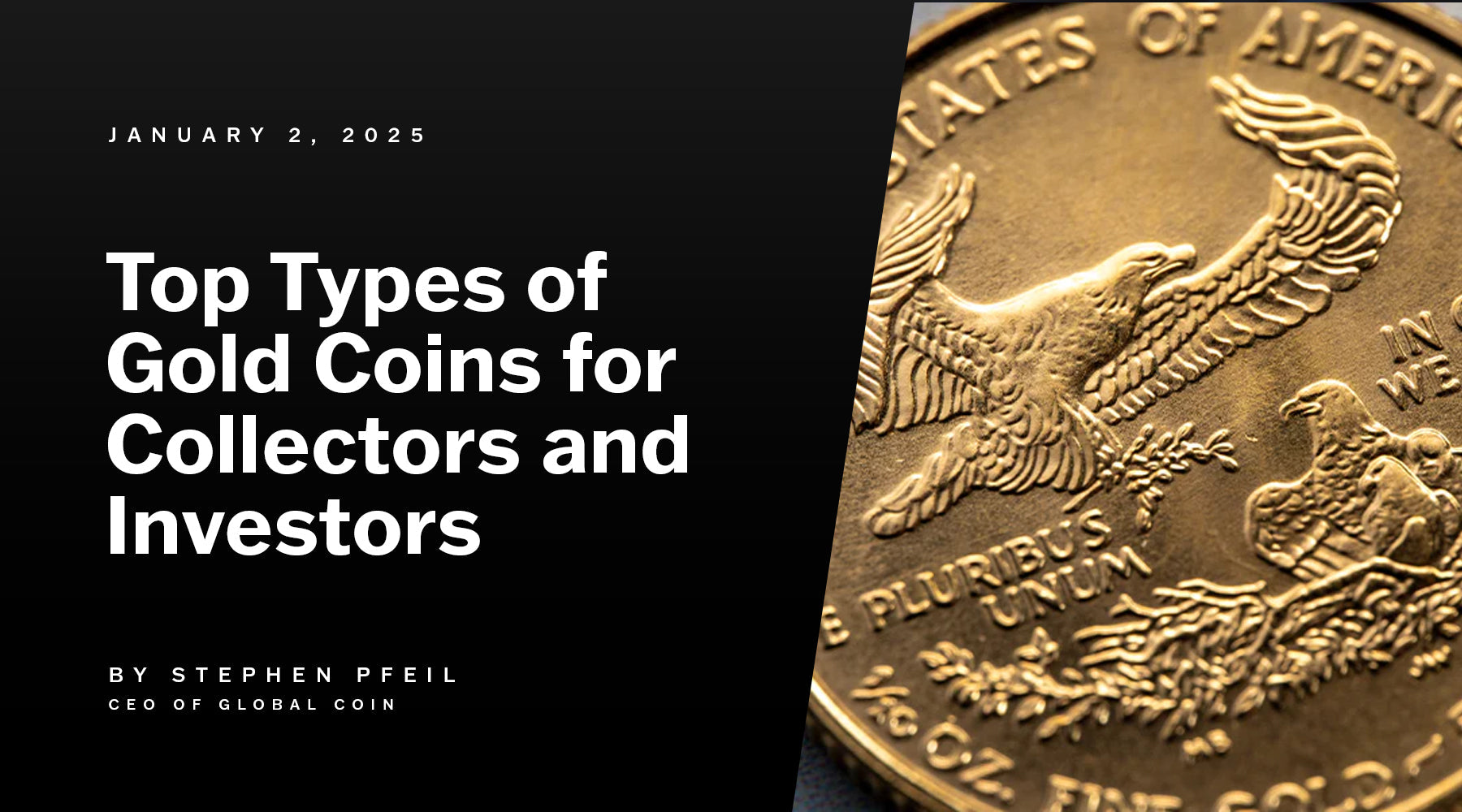
Curious about the different types of gold coins? This article covers the most popular varieties, highlighting their key features and benefits for both collectors and investors.
Key Takeaways
-
Gold coin purity, typically measured in carats, is essential for assessing value, with investment-grade coins requiring a minimum of 22 carats.
-
The U.S. Mint has produced various gold coin denominations since 1792, including iconic types like the Gold Eagle and Half Eagle, each valued for their historical significance and rarity.
-
Investing in gold coins offers tax advantages, with certain coins exempt from Capital Gains Tax and Value Added Tax, making them an attractive option for diversifying investment portfolios.
Understanding Gold Purity and Content

Gold purity plays a crucial role in evaluating gold coins. Bullion coins typically range from 22 to 24 carats, with 24 carats denoting pure gold. Investment-grade coins require at least 22 carats. To ascertain the pure gold content in a 22-carat coin, calculate its gross weight and multiply by 91.7%. For example, a 22-carat sovereign weighing 7.988 grams contains 7.322 grams of pure gold. Understanding these metrics enables collectors and investors to assess their coins’ true value.
American Eagle gold bullion coins are highly regarded for their purity, making them a popular choice for investors. Modern gold coins, frequently minted with .9999 fine gold, cater to those pursuing the finest quality in precious metals.
Purity and gold content are fundamental factors contributing to the desirability and worth of gold coins, whether for historical value or investment potential.
Popular U.S. Gold Coin Types

The United States has a rich history of gold coinage, with various denominations and designs that reflect different eras. The Coinage Act of 1792 established the $10 gold eagle, $5 gold half eagle, and $2.50 gold quarter eagle. Since 1795, the U.S. Mint has produced ten distinct denominations of gold coins, each with different values.
Ranging from early Gold Dollars to the more recent American Eagle series, these coins provide a glimpse into the nation’s economic and artistic heritage.
Gold Dollars (1849-1889)
Minted from 1849 to 1889, Gold Dollars met the demand for small denomination currency during the gold rush. Their designs include Liberty Head, Indian Princess (Small Head), and Indian Princess (Large Head). Rarity is often influenced by mintage, where lower production numbers generally lead to higher demand and value.
Collectors cherish these coins for their historical context and diverse designs.
Quarter Eagles ($2.50)
Minted from 1796 to 1929 in six distinct types, the Quarter Eagle, with a face value of $2.50, was commonly used in everyday transactions, making it integral to commerce.
Collectors prize Quarter Eagles for their scarcity and unique features, enhancing their value and desirability.
Half Eagles ($5)
Valued at $5, the Half Eagle played a significant role in the U.S. gold coinage system for over a century. Part of the denominations established by the Coinage Act of 1792, these coins are notable for their historical importance and design variations over time.
Collectors often seek Half Eagles for their historical significance and aesthetic appeal.
Double Eagles ($20)
$20 Double Eagles, authorized in 1849, contain 1 oz of gold and measure 34 mm in diameter. The two major types, Liberty Head and Saint-Gaudens designs, are highly sought after by collectors.
Investing in high-grade Double Eagles can significantly increase a collection’s value, as their condition and historical significance enhance their appeal. Demand remains strong due to their gold content and beautiful designs.
American Eagle Series
First minted in 1986, American Eagle gold bullion coins have become a staple for modern collectors and investors. The $10 American Eagles contain 1/4 oz. of gold, with 99.67% purity (22K), showcasing U.S. craftsmanship and the Mint’s commitment to high-quality production.
Valued for their unique designs and assured gold content, these coins are a reliable investment.
International Gold Coins

International gold coins provide rich opportunities for collectors and investors, combining high purity with historical significance. Modern bullion coins, often minted with .9999 fine gold, offer an accessible way to invest in precious metals.
Significant for both intrinsic worth and cultural value, coins like British Sovereigns and South African Krugerrands appeal to a global audience seeking diverse collections.
British Sovereigns
First minted in 1489 during King Henry VII’s reign, British Sovereigns are renowned for their craftsmanship and historical significance. Made from 22ct gold, these coins symbolize family heritage and wealth, passed down through generations.
Collectors value British Sovereigns for their intricate designs and the historical narratives they carry.

Canadian Maple Leafs
Introduced by the Royal Canadian Mint in 1979, Maple Leaf coins are known for their 99.99% gold purity, among the highest available. Highly sought by investors for their security and reliability, these coins reflect the Royal Canadian Mint’s commitment to excellence.
South African Krugerrands
Introduced in 1967, the Krugerrand was the first gold bullion coin designed for investment. Gaining global recognition for its gold content, it has become a popular choice for investors worldwide.
The Krugerrand’s significant influence on the gold bullion market has made it a staple in many investment portfolios.
Chinese Pandas
Introduced in 1982, Chinese Panda coins are known for their annually changing designs. Available in both gold and silver, they offer versatility and appeal to collectors and investors alike.
Panda coins, with their artistic value and precious metal content, as well as other precious metals, are a significant addition to any collection.
Modern Gold Bullion Coins

Modern gold bullion coins, designed for investors, often feature high purity levels and standardized designs. These coins must contain at least 90% pure gold, with many reaching 99.99% purity. Institutions like the U.S. Mint and Royal Canadian Mint produce these coins, offering a wide range of options for collectors and investors.
Modern gold bullion coins, from American Buffalo to Austrian Philharmonics, provide reliable and valuable investment opportunities.
American Buffalo
Introduced in 2006, American Buffalo coins are minted with 99.99% pure gold, making them among the purest available. Reflecting the U.S. Mint’s dedication to high-quality bullion, these coins are favored by investors for their purity and reliability.
Australian Kangaroos
The Perth Mint produces Australian Kangaroo coins, known for their 99.99% purity and annually changing designs. Highly collectible, these coins appeal to both investors and collectors for their artistic and intrinsic value.
Austrian Philharmonics
Austrian Philharmonic coins are celebrated for their artistic designs featuring the Vienna Philharmonic Orchestra. Minted with .9999 fine gold, these coins are highly sought after in European markets for their purity and aesthetic appeal.
Historical Gold Coins

Historical gold coins add a rich tapestry of narratives and artistic evolution to any collection. Including coins from ancient, medieval, and early modern periods adds depth and diversity.
From the British Sovereign to the Roman Aureus, these coins offer a glimpse into the past, enhancing their appeal and value.
Middle Ages and Renaissance
During the Middle Ages, gold coins like the Venetian Ducat became widely recognized for trade. Their intricate designs deterred melting, preserving their value and historical significance.
These coins were the primary form of money in Europe, reflecting the economic and artistic trends of their time.
Ancient Gold Coins
Ancient gold coins, such as the Roman Aureus and Byzantine Solidus, played crucial roles in their respective empires. Introduced around 211 BC, the Aureus was used for military expenses and set a standard for gold coinage. The Solidus, emerging from the Aureus, became a stable currency for over a thousand years, facilitating trade and economic stability.
Highly valued for their historical significance and impact on trade, these coins are prized by collectors.
Early Modern Period
In the Early Modern Period, gold coins transitioned from common currency to collectible and bullion items. By the early 20th century, the use of gold coins as circulating currency declined significantly. Coins from this era, like the United States Double Eagle, were minted with high purity and intricate designs, marking a significant development in gold coin production.
Showcasing the aesthetic and economic trends of their time, these coins are valuable additions to any collection.
Tax Advantages of Gold Coins
Investing in gold coins can offer significant tax advantages. In the UK, coins designated as legal tender by the Royal Mint are not subject to Capital Gains Tax, allowing sellers to profit without tax implications. Additionally, investment-grade gold coins are exempt from Value Added Tax, further enhancing their appeal for investors.
These tax benefits make gold coins an attractive option for those looking to diversify their investment portfolios.
Liquidity and Marketability

Liquidity is crucial for investors, enabling rapid conversion of assets like gold coins into cash. The ease of selling gold coins without affecting market value underscores their importance in investment stability. High trading volumes and strong liquidity in the gold market help mitigate price volatility, enhancing overall market stability.
Gold coins, often valued based on their gold content, are reliable investment assets.
Collecting Strategies
Building a valuable and diverse gold coin collection requires strategic planning and research. Engaging with various types of gold coins adds diversity and potential investment benefits.
International gold coins, with their varying designs and historical significance, offer a rich tapestry for collectors to explore. Focusing on rare and high-grade coins can significantly enhance a collection’s value and interest.
Building a Diverse Collection
Building a diverse gold coin collection allows collectors to enjoy various historical and modern pieces, enhancing the overall experience. Researching specific themes or trends in gold coin collecting can guide informed choices about which coins to add.
Engaging with various types of gold coins adds diversity and potential investment benefits. Incorporating coins from different eras and regions creates a more engaging and valuable collection.
Focusing on Rare Coins
Focusing on rare coins can significantly enhance the value and interest of a collection. The rarity of a coin often drives its market value and desirability among collectors. When considering rare coins, such as $3 gold pieces, it’s crucial to be aware of counterfeits and selling coins from reputable dealers.
Targeting rare and high-grade coins not only adds value but also enriches the collecting experience through their historical and numismatic significance.
Building Value with Rare and Museum Quality Gold Coins
Global Coin stands at the forefront of guiding high-net-worth investors and collectors through the intricate world of gold coins. Like those highlighted in “Top Types of Gold Coins for Collectors and Investors”, our curated inventory features iconic gold pieces such as American Eagles, Double Eagles, and British Sovereigns, known for their historical significance, rarity, and investment-grade purity. With access to exclusive, high-value coins that are virtually impossible to price shop, we ensure our clients benefit from assets that not only preserve wealth but also tell stories of craftsmanship and legacy. At Global Coin, our expertise and commitment to quality empower collectors to build diverse, valuable portfolios that stand the test of time.
Summary
In summary, gold coins offer a unique blend of historical significance, aesthetic appeal, and investment value. From understanding gold purity to exploring popular U.S. and international gold coins, each type brings its own story and value to a collection. Historical coins provide a rich tapestry of narratives, while modern bullion coins offer high purity and investment security. The tax advantages and liquidity of gold coins further enhance their appeal. Whether building a diverse collection or focusing on rare coins, strategic planning and research are key. Embrace the world of gold coin collecting and investing, and let these timeless treasures enhance your portfolio and collection.
Frequently Asked Questions
What is the minimum purity required for an investment-grade gold coin?
The minimum purity required for an investment-grade gold coin is 22 carats, which equates to approximately 91.67% gold content.
Why are American Eagle gold bullion coins popular among investors?
American Eagle gold bullion coins are favored by investors for their high purity and guaranteed gold content, making them a reliable choice for wealth preservation.
What makes British Sovereigns appealing to collectors?
British Sovereigns are appealing to collectors because of their rich history, exceptional craftsmanship, and the historical narratives they represent. These factors make them not only valuable but also meaningful collectibles.
How can collectors ensure they are purchasing authentic rare coins?
To ensure the authenticity of rare coins, collectors should purchase from reputable dealers and stay informed about potential counterfeits. This approach significantly reduces the risk of acquiring fraudulent items.
Related Articles

History and Design of the American Gold Eagle Coin
The Gold Eagle Coin is one of the most iconic and widely recognized bullion coins in the world. ...
Discover More
Investing in Gold Coins: What You Need to Know
Disclaimer: Global Coin is a dealer of precious metal coins and does not provide investment, fin...
Discover More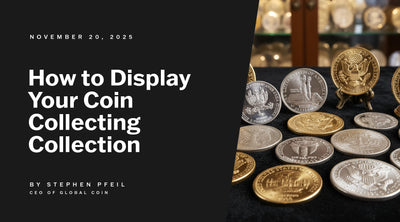
How to Display Your Coin Collecting Collection
If you’re anything like the passionate coin collectors I work with every day at Global Coin, you...
Discover More

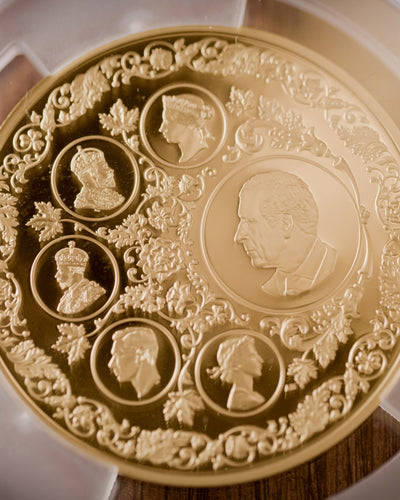
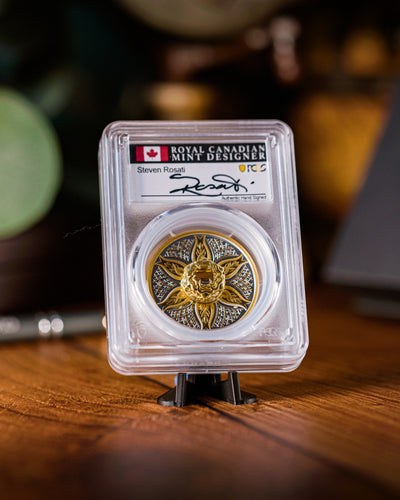
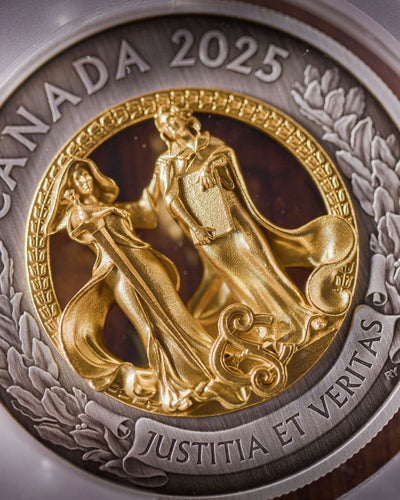
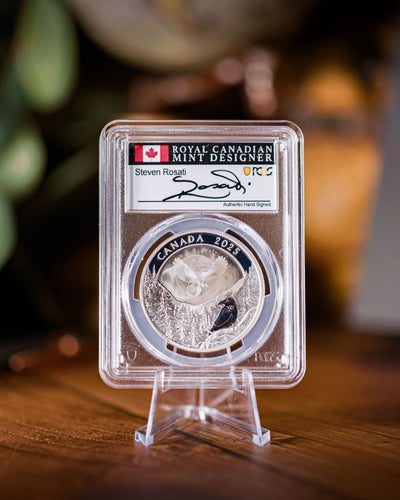
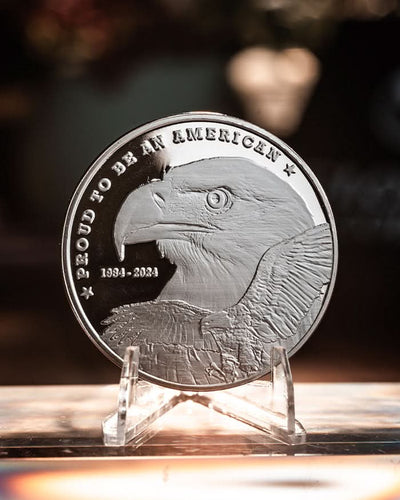
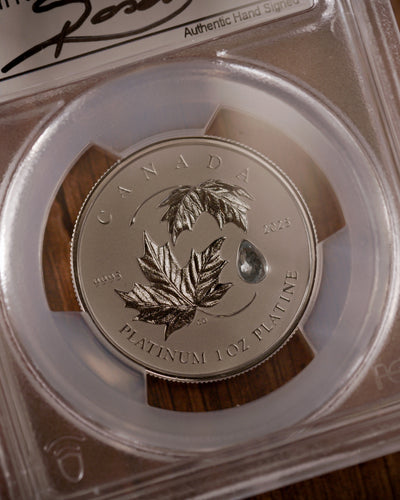
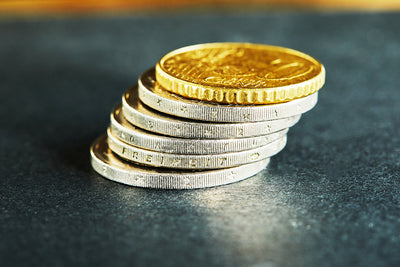
Leave a comment
This site is protected by hCaptcha and the hCaptcha Privacy Policy and Terms of Service apply.